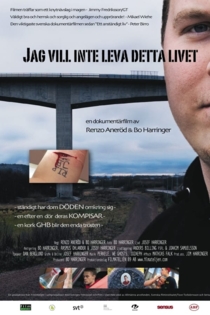
Bo Harringer
2021Även de döda har ett namn
Bo Harringer
Henry Ascher, Henning Mankell
In 2010 the Freedom Flotilla attempts to break the Israeli blockade of Gaza. In international waters the flotilla is attacked by the Israeli army and 9 people are killed. 9 anonymous people. But the dead still have a name. In 2014 Gaza is attacked by Israel. 2131 Palestinians are killed, among them 513 children. 513 dead children. But the dead children still have names. The film is about a Jewish person who has made a political journey from the Vietnam war to Gaza. This person is the paediatrician Henry Ascher, who lost his fathers entire family in the Holocaust.
The dead still have a name

Islams barn i folkhemmet
Bo Harringer, Renzo Aneröd
Three boys and three girls. All born in the Middle East now living in Sweden. All with different views of Islam, integration, the World and Sweden. Some follow Sharia. Others fight Islamic roles. One is a hip hopper. The other thinks music is a sin. One thinks that the woman must obey her husband. One fights for women’s liberation. One girl is a boxer. The other is an ordinary worker. Some are closely followed by the Security Police. Children of Islam is a documentary about religion, culture, conflicts and looking for an identity in a changing Sweden.
Children of Islam

Hat och Försoning
Bo Harringer
In 1998, some young guys arranged a party in Gothenburg. Four guys who did not get into the party wanted revenge and built a fire to spoil the party. The fire spread explosively and 63 young people died and over 200 were injured. Nebil, who arranged the party, was accused of 63 friends' death. He was then 15 years old. He lost his footing in life, became grossly criminal and participated in gang wars in Gothenburg. In 2013 he was shot. Shirin was 14 years old when she went to the party with her two sisters. Both sisters perished in the fire. Her curiosity about the guilty got her to seek them out, to find out what was behind their actions. Danijel miraculously survived. He was in hospital for six months before he came back to life. Then he wanted to be able to do everything that his friends could. But it did not work. Nebil, Shirin and Danijel are three of the young people we will meet, 15 years after the disaster, in Hate and Reconciliation.
Hate and Reconciliation

Jonsered - Från vaggan till graven
Bo Harringer
In 1797, 14-year-old William Gibson sails from Dundee in Scotland to Gothenburg. This will be the start of a young man's journey on a road that led to the construction of a factory and a society, which is largely unique in our country's history. Jonsered's factories, which came to own a whole community and took care of everyone, from the cradle to the grave. The factory owned a nursing home with a maternity ward, a nursery for the youngest, a school that fostered the prospective workers, a girls' home for young workers, housing, a trade booth, a church with a factory-employed priest and, finally, an old age home for those who rested after a long working life.
Jonsered - From cradle to grave

Född Slav
Bo Harringer, Helene Aastrup Samuels
Helene Aastrup Samuels
“Born slave” is the first film ever made about the slavery in Mauritania. The swedish filmmakers succeeded in entering Mauritania “as tourists” and secretly filming the slavery. Mauritania is the only country in the world where a slave class still exists. Humans are owned by a slave master and are forced to work without any compensation. The children are separated from their mothers at the age of one and are brought up as slaves. The film is screened throughout the world. For example in South Africa in Cape Town and Johannesburg, at several universities, schools and different Township communities. “Born slave” caused commotion when it was screened in Washington, USA. Agents from the Mauritanian embassy showed up and after some disturbance, security personel had to turn away the embassy agents. Amnesty International use the film in their activity.
Born Slave

